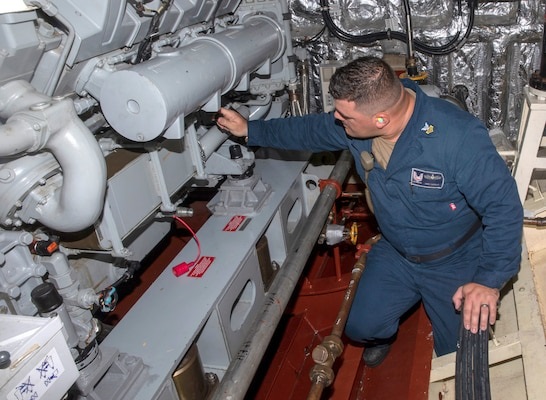The NPF were tasked in October 2016 to develop a means to determine a business case for Additive Manufacturing. They reviewed numerous articles, industry publications, and Department of Defense guidance regarding AM and discovered there wasn’t a consistent path for determining a business case for AM.
“Even though AM has been around for a while, it’s still relatively new for the Department of Defense and the Navy,” said William Peterson, NAVSUP WSS NPF Operations Research Analyst and AMCAT Team Lead. “There’s a lot of information out there on where additive manufacturing can best be used and what the benefits are, but there’s no agreement on what metrics need to be collected to determine a business case or the cost of additive manufacturing.”
The NPF quickly realized that in order to determine a viable business case, they had to collect data to help calculate both AM cost and time, as well as, determine viable results for an AM business case.
“We needed to decide as a group what data we needed to collect in order to come up with additive manufacturing cost,” said Peterson. “The ultimate goal of the tool is to determine whether it’s more cost effective to use additive manufacturing or to use established supply systems.”
The NPFs developed the AMCAT web-based tool to provide the information necessary to make an informed value decision. The tool is designed around standard engineering processes accomplished by DoD AM production sites across the United States. AMCAT is a one-of-a-kind analytics tool standardizing the collection of AM data, enabling metric reporting and provides a comparison between AM and traditional supply chain solutions.
“Currently NAVAIR and NAVSEA are our biggest proponents and have started using the web-based AMCAT, and we continue to gather data,” said Peterson.
While other entities within the DoD are working on similar solutions, the NPFs believe the AMCAT should be accepted as the standard for cost and time modeling as a way to determine return on investment.
“Our tool captures everything and uses real data for things like non-recurring engineering (labor hours and equipment purchases), shipping, contracting and transportation costs,” said Peterson. “The intention is to capture all of the costs of AM. Our tool is the only one capturing all that data.”
As the AMCAT gathers more data, the tool will provide a more accurate business case for the use of additive manufacturing. If the NPFs have their way, the AMCAT will play an integral role in determining the viability of 3D printing decisions across the DoD.
Remember, you can post job opportunities in the AM Industry on 3D ADEPT Media free of charge or look for a job via our job board. Make sure to follow us on our social networks and subscribe to our weekly newsletter : Facebook, Twitter, LinkedIn & Instagram ! If you want to be featured in the next issue of our digital magazine or if you hear a story that needs to be heard, make sure to send it to contact@3dadept.com


